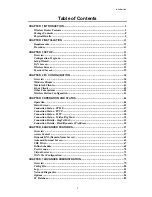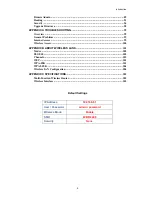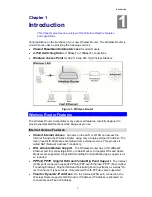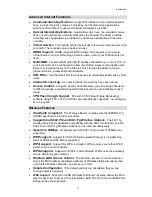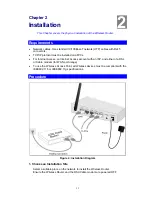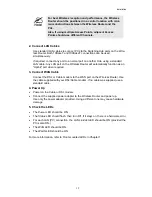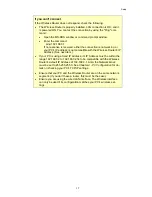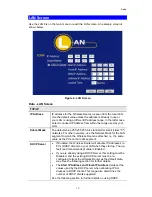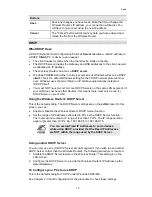
Introduction
5
Chapter 1
Introduction
This Chapter provides an overview of the Wireless Router's features
and capabilities.
Congratulations on the purchase of your new Wireless Router. The Wireless Router is
a multi-function device providing the following services:
Shared Broadband Internet Access
for all LAN users.
4-Port Switching Hub
for 10BaseT or 100BaseT connections.
Wireless Access Point
for 802.11b and 802.11g Wireless Stations.
Figure 1: Wireless Router
Wireless Router Features
The Wireless Router incorporates many advanced features, carefully designed to
provide sophisticated functions while being easy to use.
Internet Access Features
Shared Internet Access.
All users on the LAN or WLAN can access the
Internet through the Wireless Router, using only a single external IP Address. The
local (invalid) IP Addresses are hidden from external sources. This process is
called NAT (Network Address Translation).
DSL & Cable Modem Support.
The Wireless Router has a 10/100BaseT
Ethernet port for connecting a DSL or Cable Modem. All popular DSL and Cable
Modems are supported. SingTel RAS and Big Pond (Australia) login support is al-
so included.
PPPoE, PPTP, SingTel RAS and Telstra Big Pond Support.
The Internet
(WAN port) connection supports PPPoE (PPP over Ethernet), PPTP (Peer-to-Peer
Tunneling Protocol), SingTel RAS and Telstra Big Pond (Australia), as well as "Di-
rect Connection" type services. Unnumbered IP with PPPoE is also supported.
Fixed or Dynamic IP Address.
On the Internet (WAN port) connection, the
Wireless Router supports both Dynamic IP Address (IP Address is allocated on
connection) and Fixed IP Address.
1



